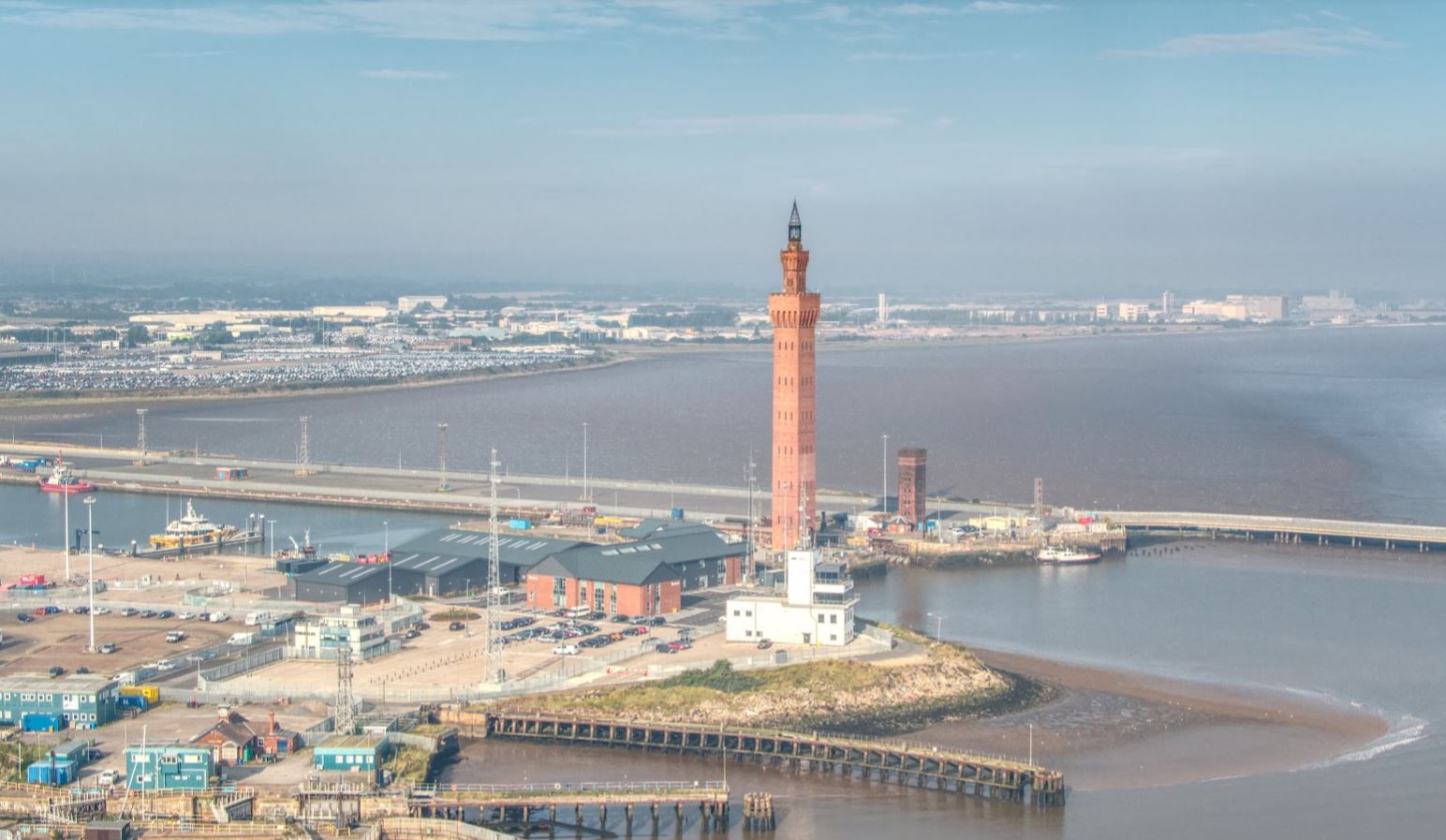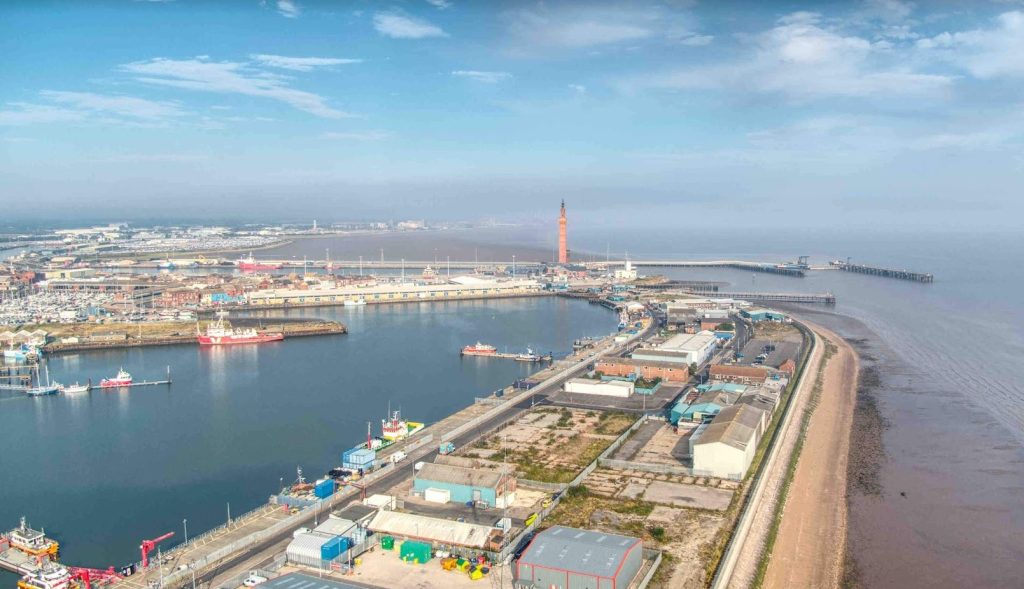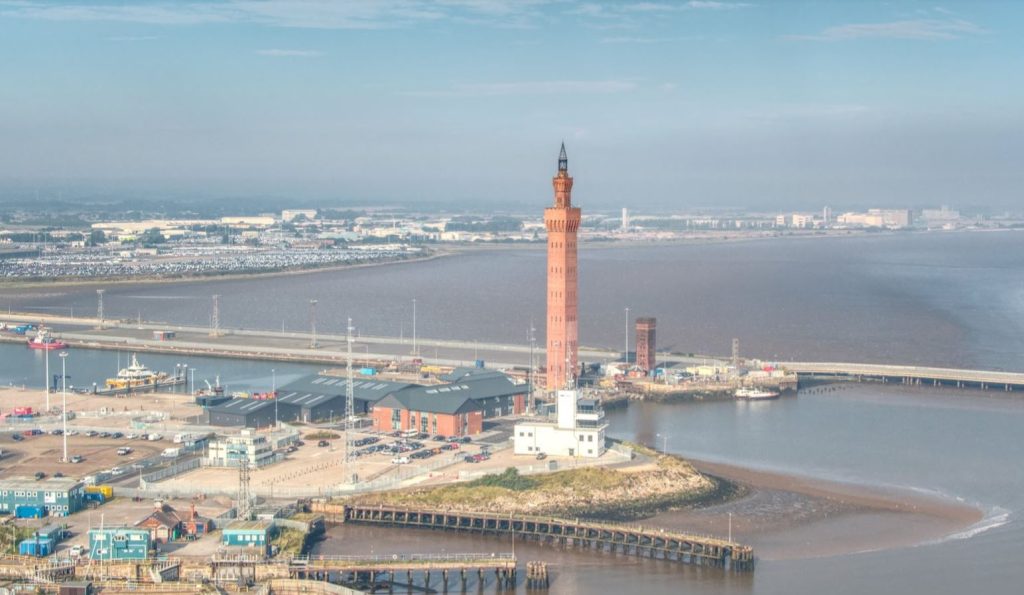Grimsby Dock Tower: A Historic Landmark and Engineering Marvel
The Grimsby Dock Tower is a Grade I listed hydraulic accumulator tower and maritime landmark at the entrance to the Royal Dock, Grimsby, in North East Lincolnshire, England. It was completed on 27 March 1852, based on William Armstrong's idea of the hydraulic accumulator, with the purpose of containing a 30,000-imperial-gallon (140,000 L) reservoir at a height of 200 feet (61 m), that was used to provide hydraulic power to power the machinery of the Grimsby Docks.
The tower is 309 feet (94 m) high, 28 feet (8.5 m) wide at the base, and tapers gradually to 26 feet (7.9 m) below the first projection; its walls are 4 feet (1.2 m) thick and narrow to 3 feet (0.91 m) at the string course under the corbels. The bricks of this plain brick tower were made from clay obtained from excavations in the marsh adjoining the docks, and are set in blue lime mortar. Hoop iron bond is used in the walls to a considerable extent.
The tower is a striking example of Victorian engineering and architecture. It is modelled on the Palazzo Pubblico in Siena, Italy, and its octagonal top is topped with an iron lantern. The tower is also notable for its use of hydraulic power, which was a relatively new technology at the time of its construction.
The Grimsby Dock Tower was decommissioned in 1974, but it remains a popular tourist attraction and a distinctive landmark on the Grimsby skyline. It is also a Grade I listed building, which means that it is considered to be of special architectural or historic interest.
In addition to its historical significance, the Grimsby Dock Tower is also a popular spot for weddings and other events. The tower's unique setting and stunning views make it a memorable place to celebrate special occasions.
The Grimsby Dock Tower is a fascinating and important part of Grimsby's history and heritage. It is a testament to the ingenuity and engineering skills of the Victorians, and it continues to be a popular tourist destination and a beloved landmark today.
Here are some additional interesting facts about the Grimsby Dock Tower:
- The tower was built by James William Wild, a local architect.
- The bricks for the tower were made from clay dug out of the marshes near the docks.
- The tower's hydraulic system was powered by two 25 hp engines.
- The tower was used to operate the lock gates and cranes in the docks.
- The tower was decommissioned in 1974, but it remains a popular tourist attraction.
- The tower is a Grade I listed building, which means that it is considered to be of special architectural or historic interest.
I hope you found this article interesting!
Here is a Drone Video that I took whilst there
Google Map showing the location of Grimsby Dock tower
A few photos of Grimsby Dock Tower
For more cool places in the UK to visit
Here is a catalogue of some of my favourite and sometimes unusual places to visit in the UK




